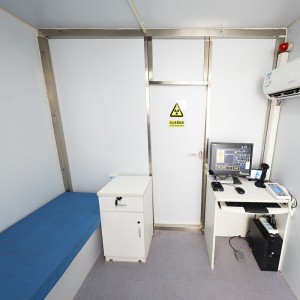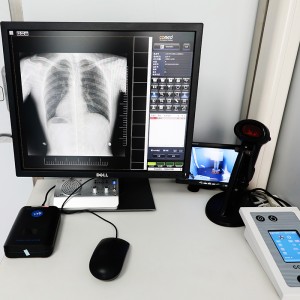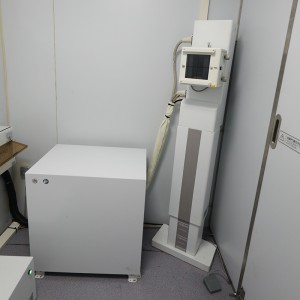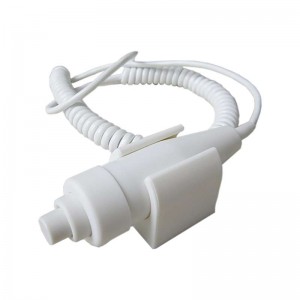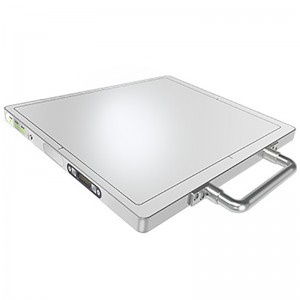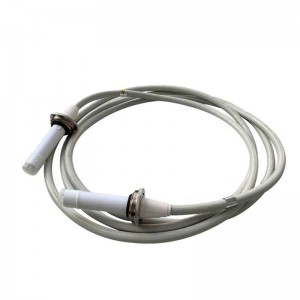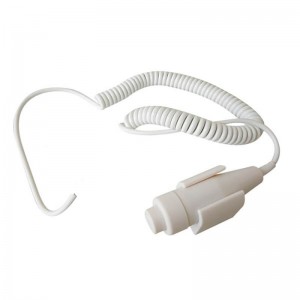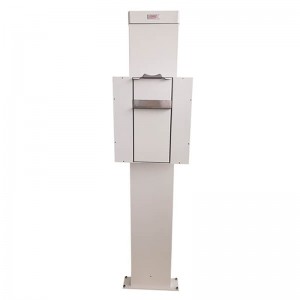Mobile Medical Vehicle
Mobile medical vehicle are becoming increasingly popular for providing out-of-town physical examinations. These vehicles are equipped with all the necessary medical equipment and accessible healthcare services to individuals who are not able to visit a traditional medical facility. This innovative approach to healthcare is revolutionizing the way physical examinations and medical services are delivered, particularly for those living in rural or remote areas.
The mobile medical vehicle is divided into a driving area, a patient inspection area, and a doctor's work area. The internal partition structure and the sliding door with lead protection isolate the medical staff from the inspected personnel and reduce the damage of rays to the medical staff; the car is equipped with ultraviolet sterilization. Disinfection lamps are used for daily disinfection, and car air conditioners provide fresh air in the car.
It is modified from a light van, and the driving area can take 3 people. The doctor's work area is equipped with a medical bed and a square table that can place B-ultrasound, electrocardiogram and other instruments. It is equipped with a computer for image acquisition, processing, and transmission, and is equipped with code scanning. Gun and ID card reader for fast entry of patient records. The doctor's work area is also equipped with a doctor-patient intercom and image monitoring device. Through the monitor screen, the intercom microphone can be used to guide the patient's body position shooting. There is a foot switch at the bottom of the operating table, which can control the protective sliding door of the inspection area. . The patient examination area consists of a high-voltage generator of a medical diagnostic X-ray machine, a detector, an X-ray tube assembly, a beam limiter, and a mechanical auxiliary device.
The convenience and accessibility of mobile medical vehicles make them an ideal solution for individuals who may not have regular access to healthcare services. By bringing medical care directly to the community, mobile medical vehicles can help to bridge the gap between patients and the care they need. This is particularly important for out-of-town physical examinations, where individuals may not have the means to travel to a distant healthcare facility for routine check-ups or screenings.
Mobile medical vehicles for out-of-town physical examinations are also valuable in emergency situations or for providing healthcare services in areas where traditional facilities are scarce. In the event of a natural disaster or public health crisis, these vehicles can be deployed to provide essential medical care to affected populations. This flexibility and adaptability make mobile medical vehicles an important resource for ensuring that individuals in remote or underserved communities have access to necessary healthcare services.
The following products are the internal components of the mobile medical vehicle
1. High-voltage generator: It is one of the core components of DR, and it is a device that converts power supply voltage and current into X-ray tube voltage and tube current.
2. X-ray tube assembly: additional fan forced air cooling design increases reliability.
3. X Ray Collimator: used in conjunction with X-ray tube components to adjust and limit the X-ray radiation field.
4. hand Switch: a switch that controls the exposure of the X-ray machine.
5. Anti-scatter x-ray grid: filter scattered rays and increase image clarity.
6. Flat Panel Detector: a variety of detector options, optional CCD detector and flat panel detector.
7. Chest radiograph stand: Independent electric lift chest radiograph stand.
8. Computer: used to display and process images.
9. Decoration and protection: The whole car is divided into a patient examination room and a doctor's studio. The examination room is isolated by lead plates, and the radiation protection level conforms to international standards. The access door is an electric sliding door.
10. Air conditioning and ventilation system: to ensure a comfortable interior environment and smooth inspection.
11. Others: The Doctor's chair, monitoring system, intercom system, barcode scanner, ID card reader, exposure indicator, UV disinfection lamp, area lighting.

Certificate






